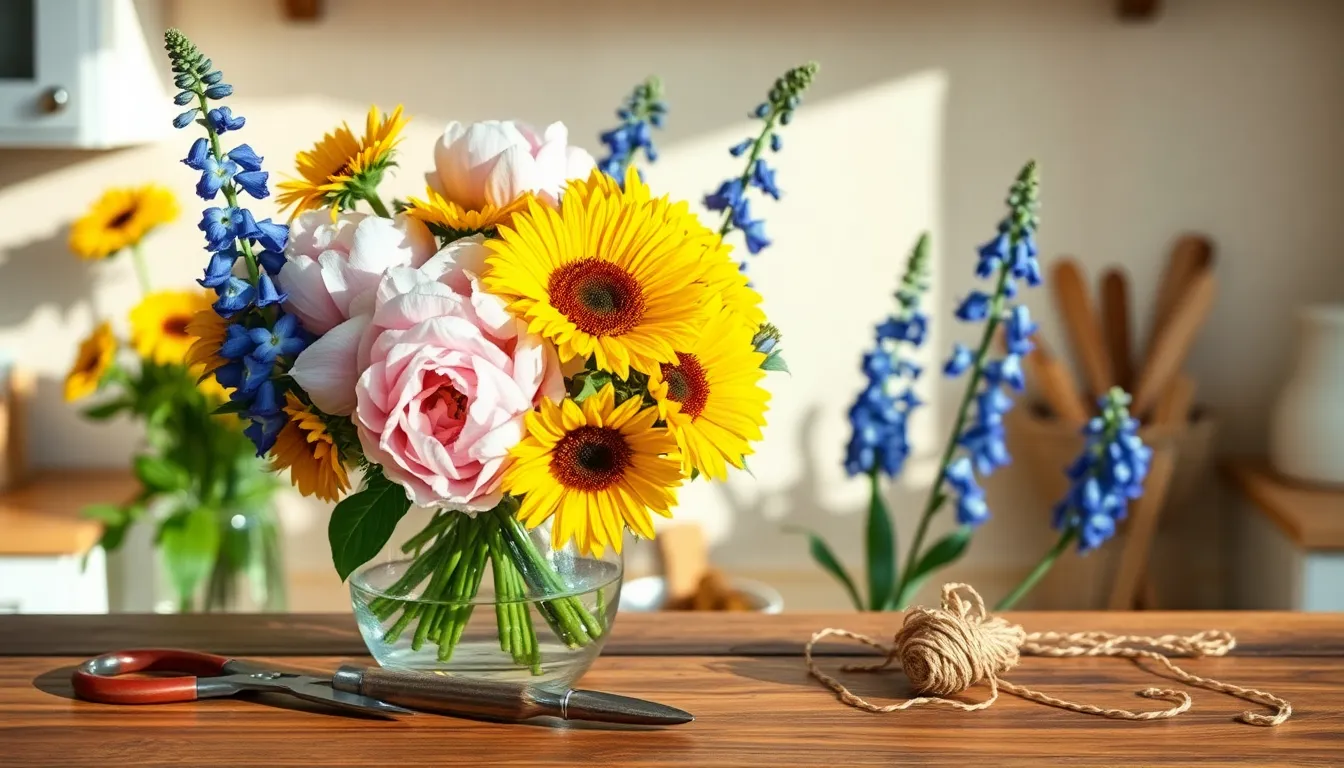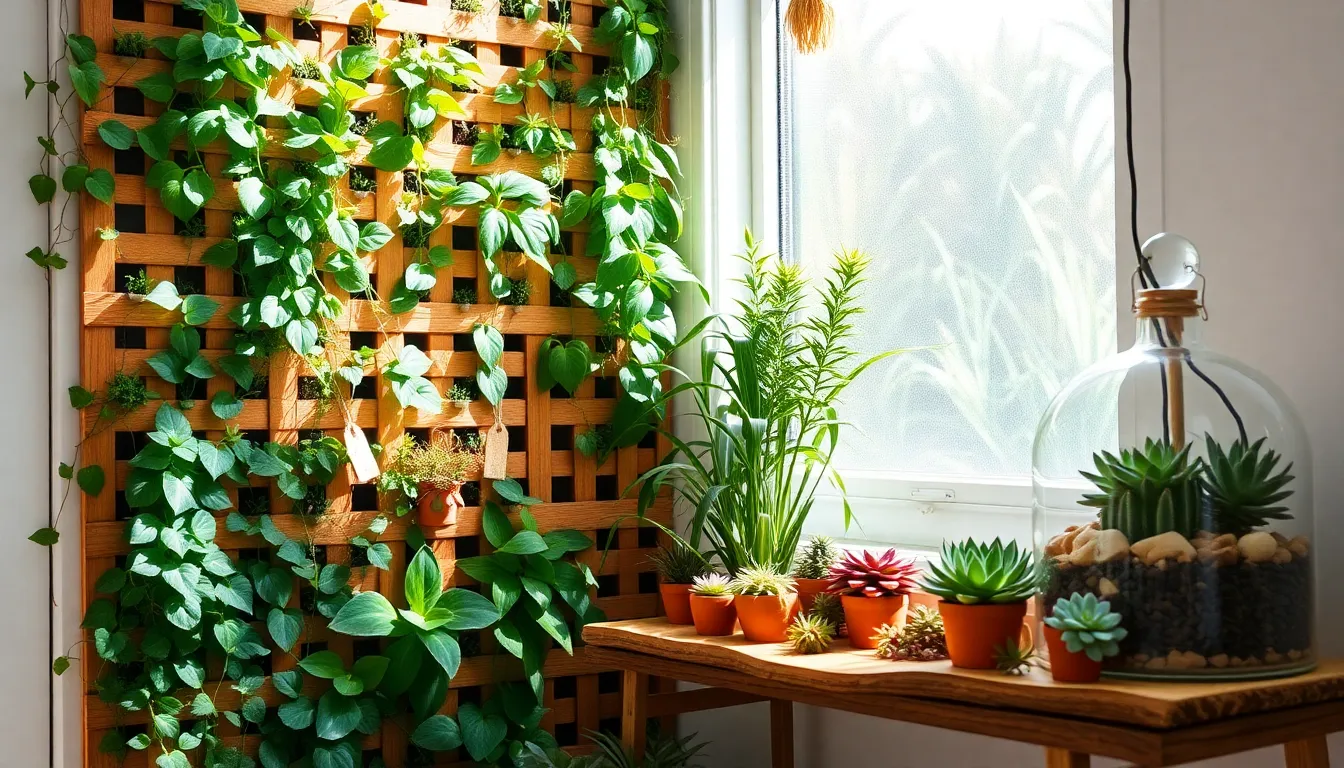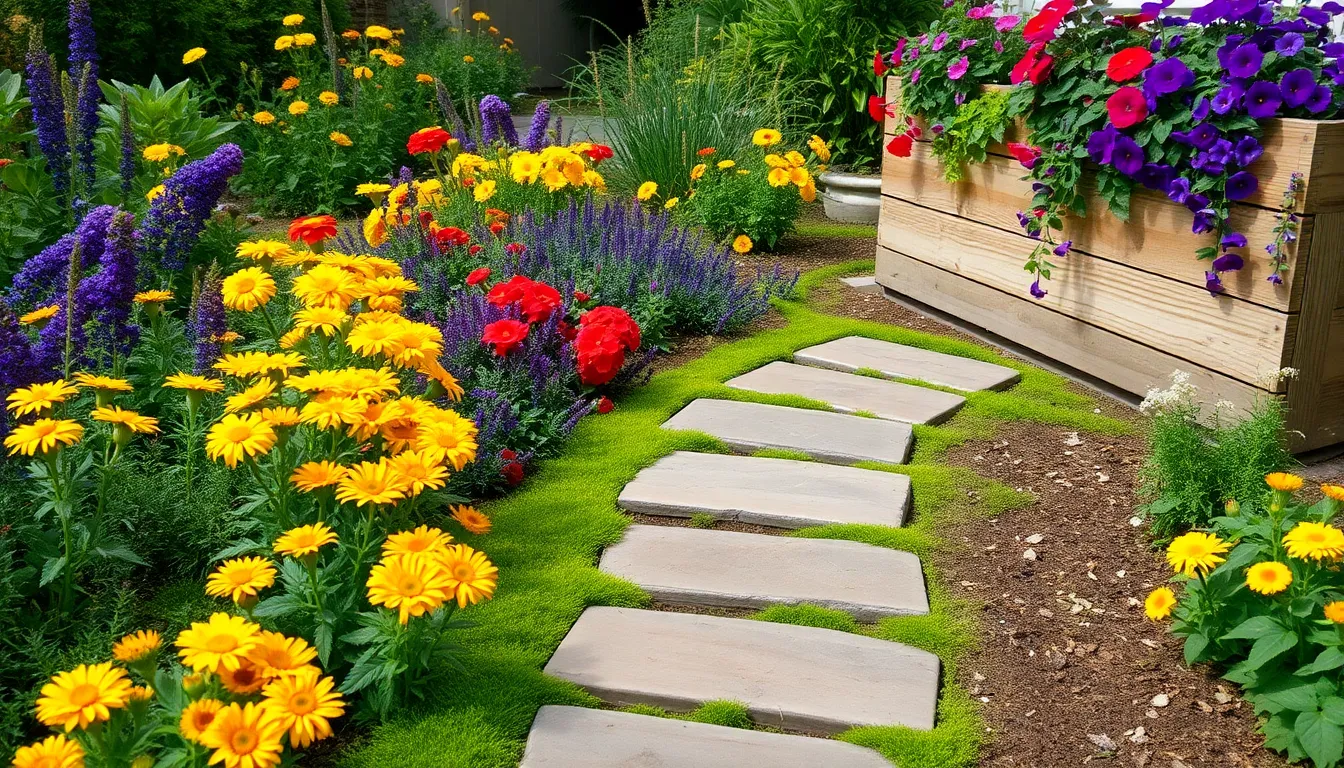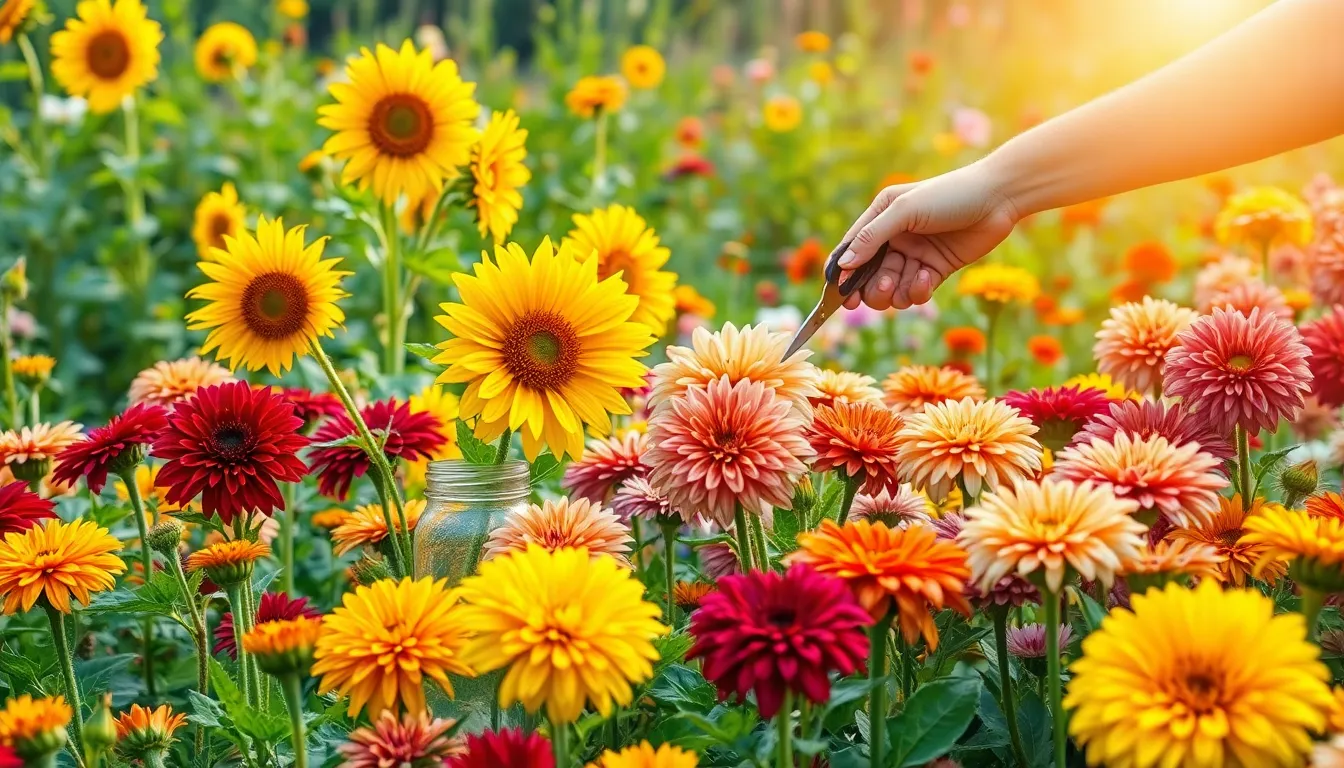Few things brighten up a home quite like a carefully crafted flower arrangement, a delightful blend of color and fragrance that reflects the beauty of nature indoors. Whether you’re a seasoned gardener with a lush backyard or a beginner with a few pots on the windowsill, creating your own floral masterpiece is a rewarding way to bring joy and vibrancy into your living space.
Understanding the art of flower arranging is more than just placing blooms in a vase; it’s about selecting the right flowers, considering color harmony, and knowing how to care for your arrangement so it lasts. In this article, we’ll guide you through the essentials of flower arrangement, from picking the perfect flowers to crafting a design that suits your style and home decor.
Select Fresh and Vibrant Flowers
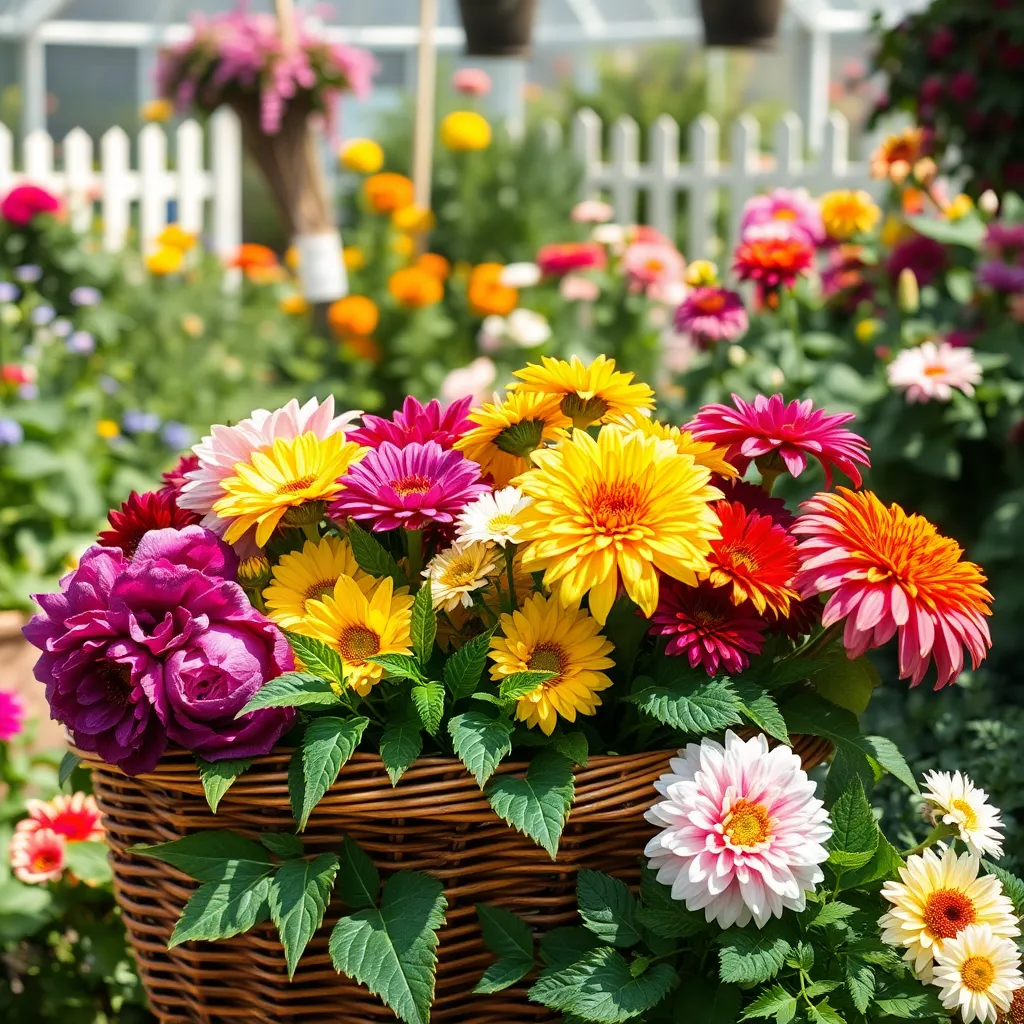
Choosing the right flowers is crucial for creating a stunning arrangement that lasts. Opt for blooms that are fresh and vibrant, as they will not only look better but also last longer once arranged.
When selecting flowers, observe their petals and stems for signs of health. Look for bright, firm petals and avoid any with browning edges or soft, wilting leaves.
For beginners, start with easy-to-care-for flowers like zinnias or sunflowers, which are known for their hardiness and vibrant colors. They thrive in full sun and require well-drained soil, making them an excellent choice for various arrangements.
Advanced gardeners might experiment with more delicate blooms such as orchids or lilies. These require specific conditions, such as consistent watering and a humid environment, but their unique beauty can elevate any arrangement.
Trim Stems to Desired Length
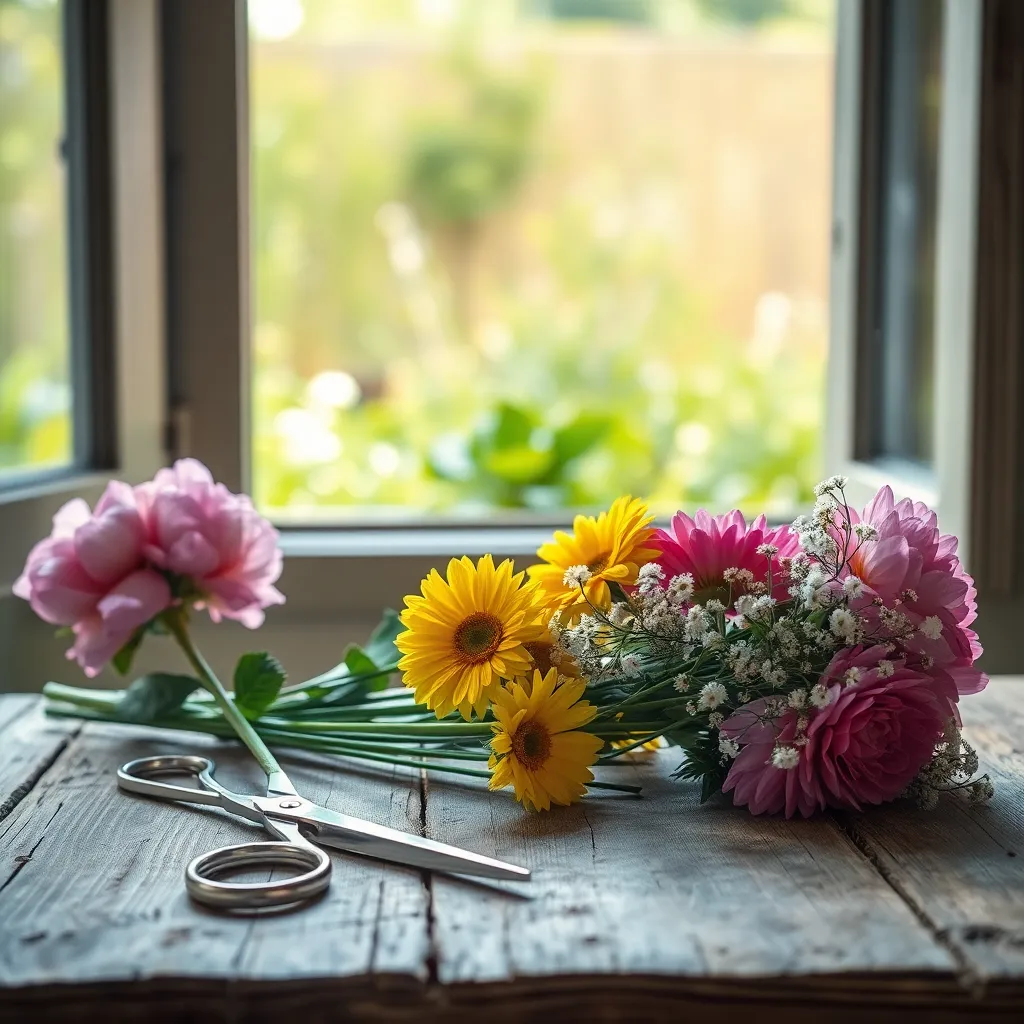
Once you’ve chosen your fresh and vibrant flowers, the next step is to trim their stems to the desired length. Properly cutting stems can significantly extend the lifespan of your arrangement. Ensure you have a sharp, clean pair of garden shears or scissors to avoid crushing the stems, which can prevent water uptake.
Start by removing any leaves that would be submerged in water, as this can lead to bacterial growth. Cut each stem at a 45-degree angle to increase the surface area for water absorption. This angled cut also helps prevent the stem from sitting flat on the bottom of the vase, improving water circulation.
For beginners, a good rule of thumb is to cut stems about one to two inches shorter than the height of the vase. Consider the overall balance of your arrangement; longer stems should be placed at the back or center. This creates depth and visual interest, making your display more dynamic and appealing.
Advanced gardeners might experiment with varying stem lengths to create layers and textures in their arrangements. Try incorporating flowers with different stem lengths to add dimension and complexity. Remember, each cut you make is an opportunity to enhance the beauty and longevity of your floral masterpiece.
Arrange Flowers in Balanced Groups
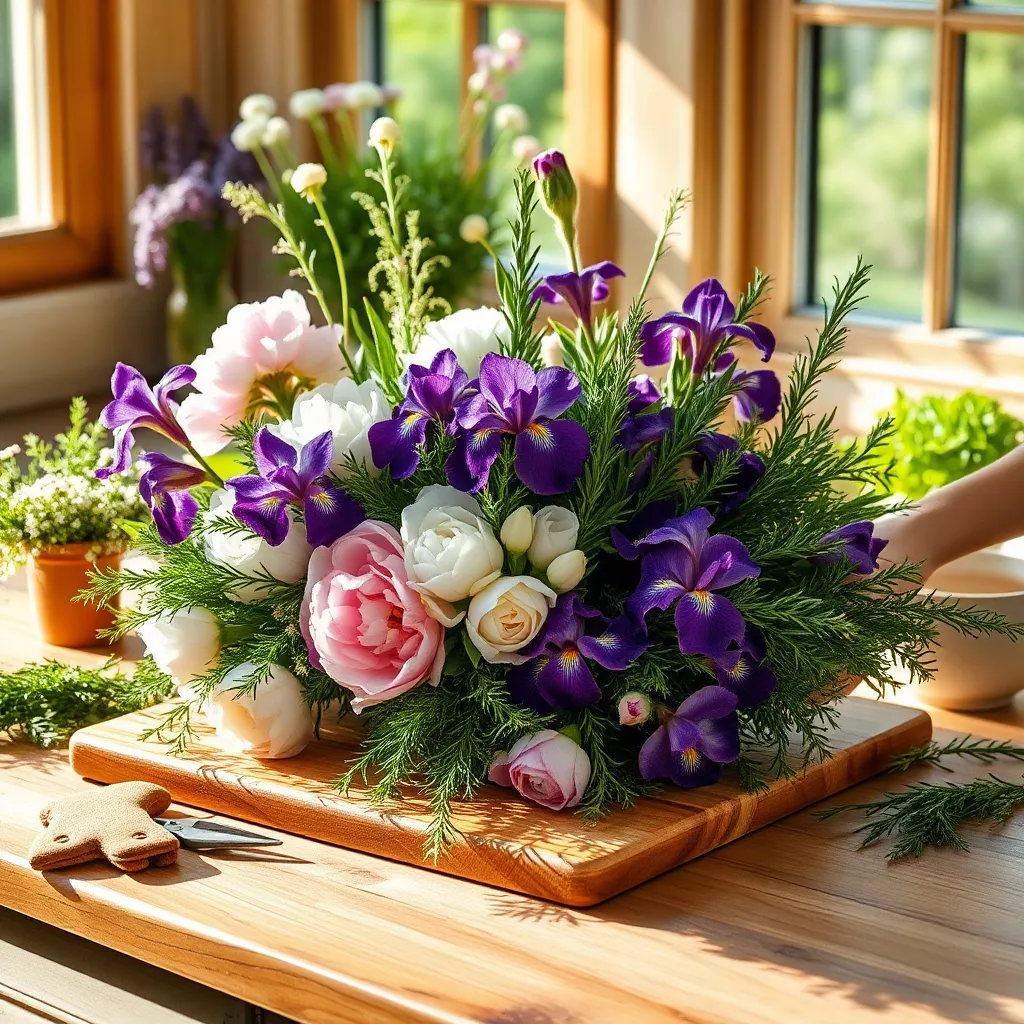
Creating a visually appealing flower arrangement starts with grouping flowers in a balanced way. Begin by selecting a variety of blooms that complement each other in color and size, ensuring they fit the overall theme and style of your home decor.
To achieve balance, use a mix of focal flowers, fillers, and greenery. Focal flowers, such as roses or lilies, should be used sparingly and placed strategically to draw the eye, while fillers like baby’s breath or ferns help create depth and texture.
Consider the height and shape of your flowers when arranging them. Taller flowers should be placed towards the back or center of the arrangement to provide structure, with shorter blooms filling in around them to create a lush look.
For a more advanced touch, experiment with asymmetrical arrangements by placing flowers at varying angles. This technique adds movement and interest, but remember to maintain balance by distributing colors and types evenly throughout the arrangement to keep it harmonious.
Add Greenery for Texture
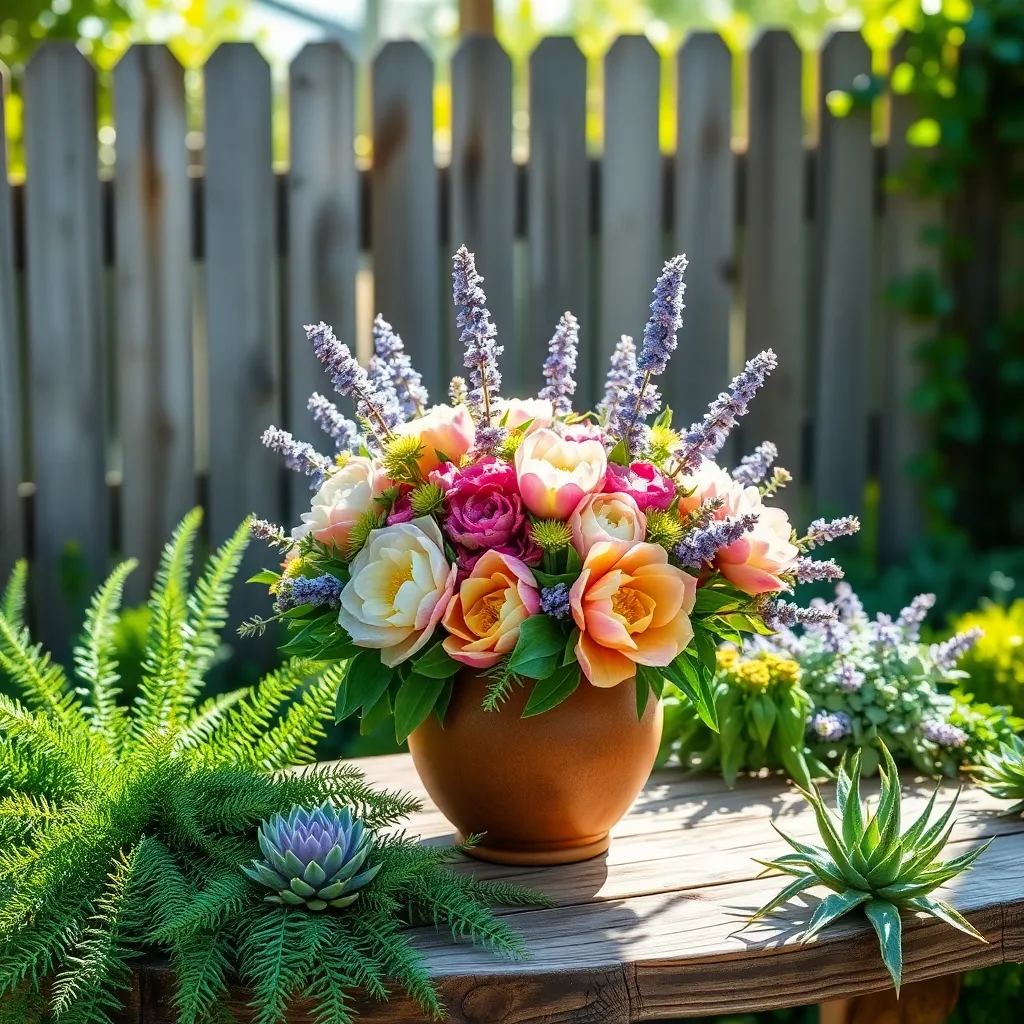
Incorporating greenery into your flower arrangements adds both texture and depth, enhancing the overall visual appeal. Consider using a variety of foliage such as ferns, eucalyptus, or ivy to create a lush backdrop for your flowers.
Choose foliage that complements your flowers not only in color but also in shape and size. For instance, the delicate fronds of ferns can contrast beautifully with bold, large blooms like hydrangeas or roses.
When selecting greenery, pay attention to the growing conditions each type requires. Most leafy greens thrive in well-draining soil and need regular watering, especially during dry spells, to maintain their vibrant appearance.
For a more advanced touch, experiment with different textures by mixing variegated leaves with smooth or shiny foliage. Hosta leaves, with their striking patterns, can add a sophisticated touch to any arrangement.
To keep your greenery looking fresh, trim the stems at an angle and place them in tepid water before arranging. This allows for better water absorption and extends the life of your foliage.
Secure Arrangement with Floral Foam
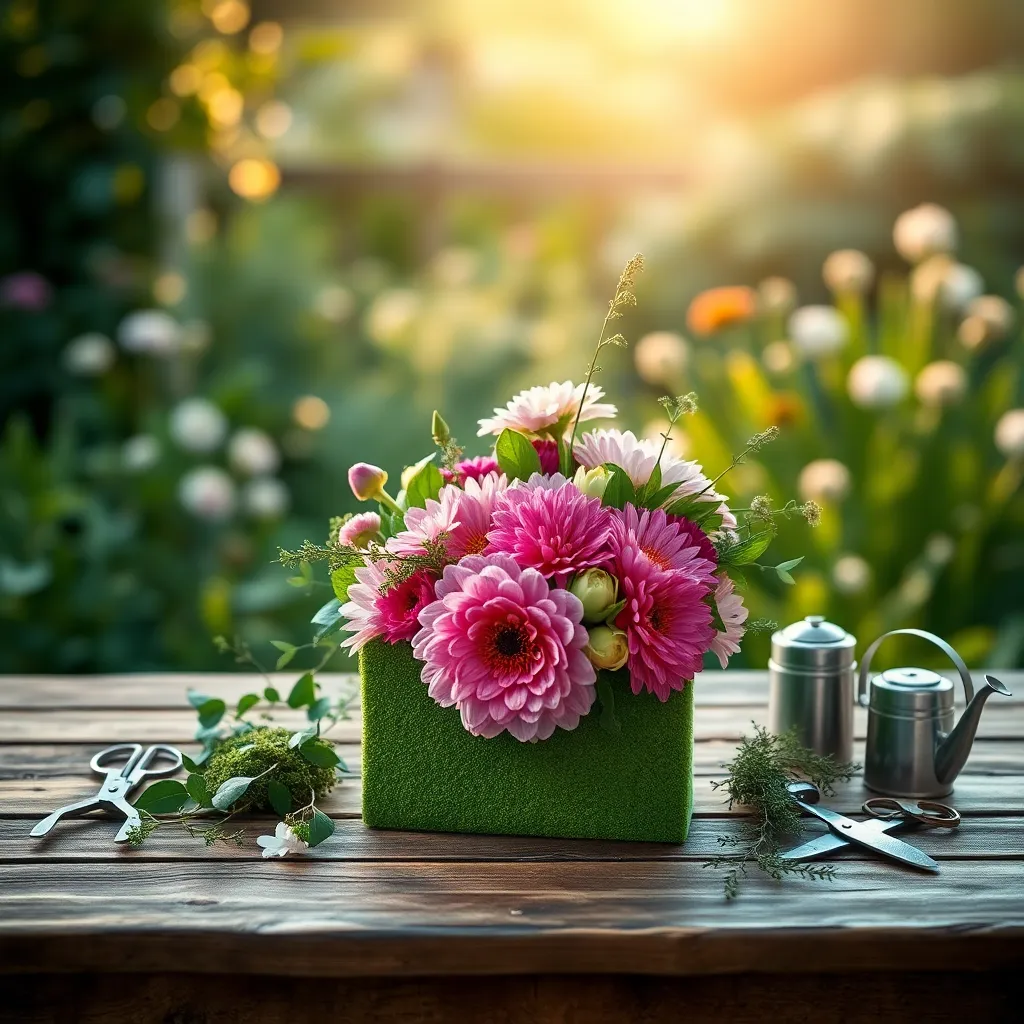
Floral foam is an excellent tool for creating a stable base in your flower arrangements. Start by cutting the foam to fit the container snugly, ensuring it provides support for all stems.
Soak the floral foam in water before use, allowing it to absorb moisture completely. This will not only help keep your flowers hydrated but also make the foam easier to work with.
Insert your flowers and greenery into the foam at a slight angle for better stability. Ensure each stem is securely anchored in the foam to maintain the arrangement’s shape over time.
For longer-lasting arrangements, use a floral preservative in the water you soak the foam with. This step helps prevent bacteria growth and keeps your flowers fresh for longer periods.
Conclusion: Growing Success with These Plants
In exploring the art of flower arrangement, we delved into five essential relationship concepts: communication, patience, creativity, attention to detail, and appreciation. Just as selecting the right blooms requires careful consideration, effective communication is key to understanding your partner’s needs. Patience, much like arranging stems, fosters growth and harmony in your relationship. Creativity keeps the spark alive, ensuring your connection remains vibrant and fresh. Attention to detail shows your partner that you value the small things that make your bond unique. Finally, appreciation, like the admiration of a completed bouquet, reinforces love and gratitude.
As an actionable next step, take a moment today to engage in meaningful communication with your partner, perhaps while creating a simple flower arrangement together. This shared activity can enhance your connection and deepen mutual understanding.
Remember, nurturing your relationship is a continuous journey. Save or bookmark this article as a handy guide, ensuring you can revisit these concepts whenever needed. With dedication and mindfulness, your relationship can flourish beautifully, much like a well-tended garden. Embrace these principles, and watch as your partnership blooms with success and joy.

